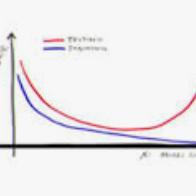With the assistance of sophisticated training methods applied to single labeled datasets, the performance of fully-supervised person re-identification (Person Re-ID) has been improved significantly in recent years. However, these models trained on a single dataset usually suffer from considerable performance degradation when applied to videos of a different camera network. To make Person Re-ID systems more practical and scalable, several cross-dataset domain adaptation methods have been proposed, which achieve high performance without the labeled data from the target domain. However, these approaches still require the unlabeled data of the target domain during the training process, making them impractical. A practical Person Re-ID system pre-trained on other datasets should start running immediately after deployment on a new site without having to wait until sufficient images or videos are collected and the pre-trained model is tuned. To serve this purpose, in this paper, we reformulate person re-identification as a multi-dataset domain generalization problem. We propose a multi-dataset feature generalization network (MMFA-AAE), which is capable of learning a universal domain-invariant feature representation from multiple labeled datasets and generalizing it to `unseen' camera systems. The network is based on an adversarial auto-encoder to learn a generalized domain-invariant latent feature representation with the Maximum Mean Discrepancy (MMD) measure to align the distributions across multiple domains. Extensive experiments demonstrate the effectiveness of the proposed method. Our MMFA-AAE approach not only outperforms most of the domain generalization Person Re-ID methods, but also surpasses many state-of-the-art supervised methods and unsupervised domain adaptation methods by a large margin.
翻译:在对单一标签数据集应用的尖端培训方法的帮助下,在最近几年里,完全监督的人重新识别(个人重新识别)的性能有了显著改善;然而,在单一数据集方面受过培训的模型在应用到不同相机网络的视频时,通常会出现相当的性能退化。为了使个人重新识别系统更加实用和可扩缩,已提议了一些交叉数据集域适应方法,这些方法在没有目标域的标签数据的情况下取得了很高的性能。然而,这些方法仍然需要在培训过程中提供目标域的无标签数据,使其不切实际。一个实际的重新识别系统在对其他数据集进行预先培训后,应在新网站部署后立即开始运行,而不必等到收集足够的图像或视频并调整预先培训的模式。为了达到这一目的,我们在本文件中将人重新定位为多数据集域域域通用问题。我们提议了一个多数据共识化方法(MMIFA-AE),它能够学习通用域域域域内通用的通用域域域域域域内、最通用的惯性A-最高级的域域域域域内数据缩缩缩缩缩缩图,还学习一个通用的通用的惯性系统。


